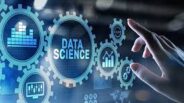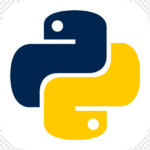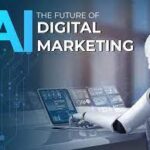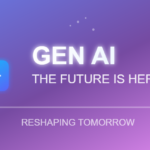Data Science: How It’s Transforming Our World

In a world increasingly driven by information, data science stands at the forefront of technological innovation. But what exactly is data science, and why should you care about it? Let’s break down this fascinating field into digestible pieces and explore how it’s quietly revolutionizing virtually every aspect of our lives.
What Is Data Science, Really?
At its core, data science is about extracting knowledge and insights from data. Think of it as modern-day alchemy—transforming raw, seemingly chaotic information into valuable insights that drive decisions. Unlike traditional analysis, data science combines:
– Statistics: The mathematical backbone that helps us understand patterns
– Computer Science: Programming and algorithms that process massive datasets
– Domain Expertise: The contextual knowledge that gives meaning to the numbers
This interdisciplinary approach allows data scientists to tackle problems that were previously unsolvable.
The Magic Behind the Curtain: How Data Science Works
1. Data Collection
Every data science project begins with gathering information. This could be anything from customer purchase histories to sensor readings from industrial equipment. Modern organizations collect data from countless sources:
– Website interactions
– Social media activity
– IoT devices
– Business transactions
– Mobile applications
2. Data Cleaning and Preparation
Raw data is messy—full of errors, missing values, and inconsistencies. Data scientists spend significant time cleaning and structuring data before analysis can begin. This unglamorous stage is crucial; as the saying goes, “garbage in, garbage out.”
3. Exploratory Analysis
This is where the detective work begins. Data scientists look for patterns, correlations, and anomalies using visualization tools and statistical techniques. They might discover that product sales spike every third Thursday or that customer churn increases after specific events.
4. Modeling and Algorithms
Here’s where advanced mathematics meets computing power. Data scientists build mathematical models that can:
– Predict future outcomes: Will this customer buy our product?
– Classify information: Is this email spam or not?
– Identify groups: Which customers have similar behaviors?
– Detect anomalies: Is this transaction fraudulent?
5. Interpretation and Communication
The final step transforms technical findings into actionable insights. The best data scientists are also storytellers, able to explain complex results to non-technical stakeholders.
Data Science in Action: Real-World Applications
Healthcare Revolution
Imagine algorithms that can detect cancer from medical images with greater accuracy than human doctors. Or predictive models that identify patients at risk for diseases before symptoms appear. These aren’t science fiction—they’re happening now.
For example, researchers at Stanford developed an AI system that identifies skin cancer with 91% accuracy, comparable to board-certified dermatologists.
Smart Cities Getting Smarter
Cities worldwide are using data science to optimize everything from traffic flow to energy usage. In Barcelona, smart sensors reduce traffic congestion by 21% and cut emergency response times by 25%.
Personalized Experiences
Ever wondered how Netflix seems to know exactly what show you’ll want to watch next? Or how Spotify creates playlists that perfectly match your taste? These personalized recommendations come from collaborative filtering algorithms and machine learning models that analyze your behavior alongside millions of other users.
Climate Action
Data scientists are helping tackle climate change by:
– Optimizing renewable energy production based on weather forecasts
– Modeling climate scenarios to inform policy decisions
– Tracking deforestation using satellite imagery and computer vision
Getting Started in Data Science
If you’re intrigued by data science, here are some steps to begin your journey:
1.Build mathematical foundations: Refresh your knowledge of statistics and linear algebra
2.Learn a programming language: Python and R are popular choices
3.Practice with real datasets: Kaggle offers competitions and datasets for beginners
4.Develop visualization skills: Tools like Tableau and PowerBI make data come alive
5.Join communities: Connect with other data enthusiasts through forums and meetups
The Future of Data Science
As computing power increases and algorithms improve, we’re entering an era where data science will become even more powerful. Emerging trends include:
– Automated machine learning: Making sophisticated modeling accessible to non-specialists
– Edge computing: Processing data directly on devices rather than in centralized servers
– Ethical AI: Ensuring algorithms are fair, transparent, and respect privacy
Conclusion
Data science isn’t just for tech companies or research labs anymore—it’s becoming essential across industries and disciplines. By understanding how data science works, you’re better equipped to participate in our increasingly data-driven world.
Whether you’re looking to advance your career, start a business, or simply understand the technology shaping our future, data literacy is becoming as important as traditional literacy was in the 20th century.
The beauty of data science lies in its ability to reveal hidden patterns and connections that human intuition alone might miss. It empowers us to make better decisions, solve complex problems, and ultimately create a more efficient, sustainable, and personalized world.
Are you ready to harness the power of data?

 Currency Convertor
Currency Convertor Post an article
Post an article Abhay Rana
Abhay Rana
 sending...
sending...




